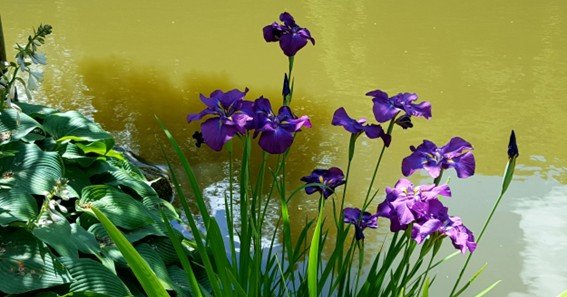If you’ve ever wondered why did hiroshige print a hanashobu iris, you’re delving into the world of Edo-period art and the symbolic language of nature in Japanese culture. Hiroshige, a master of the ukiyo-e movement, was renowned for his vivid depictions of natural beauty and seasonal changes.
The hanashobu iris, celebrated for its delicate yet resilient form, was chosen not only for its aesthetic appeal but also for its deep cultural symbolism in Japan.
The Artistic and Cultural Significance of the Hanashobu Iris
1. Embracing Nature’s Beauty in Ukiyo-e Art
Hiroshige’s work is synonymous with capturing the fleeting moments of nature. By printing the hanashobu iris, he showcased the exquisite beauty of this flower, a common motif in Japanese art.
The iris is admired for its graceful form and vibrant colors, making it a perfect subject for a woodblock print that emphasizes both elegance and natural splendor.
2. Symbolism of the Hanashobu Iris in Japanese Culture
In Japanese symbolism, the iris is often associated with purity, renewal, and resilience. The hanashobu iris, in particular, was admired for its ability to thrive in challenging conditions, symbolizing perseverance and strength.
Hiroshige’s choice to print this flower reflects a broader cultural appreciation for nature’s enduring qualities, which resonated deeply with his contemporary audience.
3. Reflecting Seasonal Change and Transience
A central theme in Hiroshige’s work is the transient nature of life, often illustrated through seasonal imagery. The blooming of the hanashobu iris can be seen as a metaphor for the ephemeral beauty of each moment.
This print invites viewers to appreciate the delicate balance between impermanence and the enduring spirit of nature, a concept deeply rooted in Japanese aesthetics.
4. Technical Mastery and Visual Impact
Hiroshige’s innovative use of composition and color in his prints set him apart as a visionary artist. The hanashobu iris print represents his ability to blend detailed natural observation with expressive, bold design. His work continues to influence modern art and remains a vital part of the Ukiyo-e legacy.
FAQs
- Q: Who was Hiroshige, and why is he significant in Japanese art?
A: Hiroshige was a prominent ukiyo-e artist during the Edo period, known for his captivating landscapes and nature scenes. His innovative woodblock prints helped define the genre and continue to inspire artists worldwide. - Q: What does the hanashobu iris symbolize in Japanese culture?
A: The hanashobu iris symbolizes purity, renewal, and resilience. It is admired for its elegant beauty and its ability to thrive in adversity, reflecting key cultural values in Japanese aesthetics. - Q: How does Hiroshige’s print of the hanashobu iris reflect his artistic style?
A: Hiroshige’s print captures the delicate balance of nature with bold, expressive lines and vibrant colors. His attention to detail and innovative composition techniques are evident in this work, highlighting the transient beauty of the natural world. - Q: Why was nature such a central theme in ukiyo-e art?
A: Nature was a vital theme in ukiyo-e art because it represented the fleeting, ever-changing beauty of life—a concept that resonated with the cultural and philosophical ideas of the time, including the appreciation of transient moments. - Q: Are there other notable works by Hiroshige that feature natural motifs?
A: Yes, Hiroshige created many celebrated prints featuring nature, such as his series of landscapes and seasonal scenes. His works often highlight flowers, waterways, and changing seasons, all of which underscore the beauty and impermanence of the natural world.
By exploring why Hiroshige printed a hanashobu iris, we uncover a rich tapestry of artistic vision and cultural symbolism. Hiroshige’s choice to depict the hanashobu iris was not only a celebration of nature’s beauty but also an expression of enduring themes like purity, resilience, and the transient nature of life. His work continues to captivate audiences, inviting us to reflect on the delicate interplay between nature and art.










